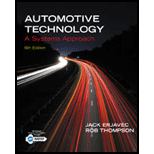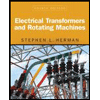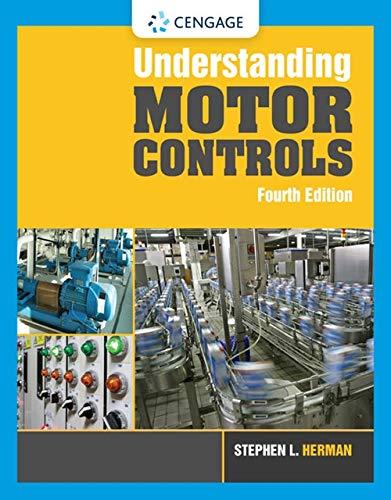
Concept explainers
- Explain staged and continuously variable value timing systems.
The explanation of staged and continuously variable valve timing systems.
Explanation of Solution
Staged variable valve timing:
Staged valve timing consists of a central camshaft, where the lobes push against the wall to open when the camshaft is rotated. Crankshaft provides input to drive cam. Both the valves can be opened when there is a single cam. In the case of two cams, one can be used for intake and the second cam is for exhaust.
Valve timing ideal value point changes with a change in rpm. It is related to engine performance and fuel efficiency.
It involves three cams with different timing and lifts profile.
Stage one- low speed.
Stage two- medium speed.
Stage three- high speed.
Example − Honda VTEC system.
Continuously variable valve timing:
Continuously variable valve timing camshaft is fitted with a phaser. It is mounted in place of timing pulley, sprocket, or gear. The principle of phaser is based on a helical gear set or vanes enclosed in a housing. When the engine is running, it helps in changing time from cam-shaft to crankshaft.
It can be electronically or hydraulic controlled.
Example − Toyota’s VVT-i system.
Want to see more full solutions like this?
Chapter 12 Solutions
Tech Manual for Erjavec's Automotive Technology: A Systems Approach
- Hot water is flowing at an average velocity of 5.82 ft/s through a cast iron pipe (k=30 Btu/h-ft-°F) whose inner and outer diameters are 1.0 in and 1.2 in, respectively. The pipe passes through a 50-ft-long section of a basement whose temperature is 60°F. The emissivity of the outer surface of the pipe is 0.5, and the walls of the basement are also at about 60°F. If the inlet temperature of the water is 150°F and the heat transfer coefficient on the inner surface of the pipe is 30 Btu/h-ft².°F, determine the temperature drop of water as it passes through the basement. Evaluate air properties at a film temperature of 105°C and 1 atm pressure. The properties of air at 1 atm and the film temperature of (Ts+ T∞)/2 = (150+60)/2 = 105°F are k=0.01541 Btu/h-ft-°F. v=0.1838 × 10-3 ft2/s, Pr = 0.7253, and ẞ = 0.00177R-1arrow_forwardhand-written solutions only, please. correct answers upvoted!arrow_forwardhand-written solutions only, please. correct answers upvoted!arrow_forward
- ! Required information Consider a flat-plate solar collector placed horizontally on the flat roof of a house. The collector is 1.3 m wide and 2.8 m long, and the average temperature of the exposed surface of the collector is 42°C. The properties of air at 1 atm and the film temperature are k=0.02551 W/m-°C, v = 1.562 × 10-5 m²/s, Pr = 0.7286, and ẞ= 0.003356 K-1 Determine the rate of heat loss from the collector by natural convection during a calm day when the ambient air temperature is 8°C. The rate of heat loss from the collector by natural convection is W.arrow_forwardhand-written solutions only, please. correct answers upvoted!arrow_forwardhand-written solutions only, please. correct answers upvoted!arrow_forward
- Please find the torsional yield strength, the yield strength, the spring index, and the mean diameter.arrow_forward(read image) (Answer Given)arrow_forward6.76 A wind turbine is operating in a 12 m/s wind that has a den- sity of 1.2 kg/m³. The diameter of the turbine silhouette is 4 m. The constant-pressure (atmospheric) streamline has a diameter of 3 m upstream of the windmill and 4.5 m downstream. Assume that the velocity distributions are uniform and the air is incom- pressible. Determine the force on the wind turbine. m P = Patm 4 Vz 4m 4 m Fx. Problem 6.76arrow_forward
 Automotive Technology: A Systems Approach (MindTa...Mechanical EngineeringISBN:9781133612315Author:Jack Erjavec, Rob ThompsonPublisher:Cengage Learning
Automotive Technology: A Systems Approach (MindTa...Mechanical EngineeringISBN:9781133612315Author:Jack Erjavec, Rob ThompsonPublisher:Cengage Learning Precision Machining Technology (MindTap Course Li...Mechanical EngineeringISBN:9781285444543Author:Peter J. Hoffman, Eric S. Hopewell, Brian JanesPublisher:Cengage Learning
Precision Machining Technology (MindTap Course Li...Mechanical EngineeringISBN:9781285444543Author:Peter J. Hoffman, Eric S. Hopewell, Brian JanesPublisher:Cengage Learning Electrical Transformers and Rotating MachinesMechanical EngineeringISBN:9781305494817Author:Stephen L. HermanPublisher:Cengage Learning
Electrical Transformers and Rotating MachinesMechanical EngineeringISBN:9781305494817Author:Stephen L. HermanPublisher:Cengage Learning Understanding Motor ControlsMechanical EngineeringISBN:9781337798686Author:Stephen L. HermanPublisher:Delmar Cengage Learning
Understanding Motor ControlsMechanical EngineeringISBN:9781337798686Author:Stephen L. HermanPublisher:Delmar Cengage Learning



